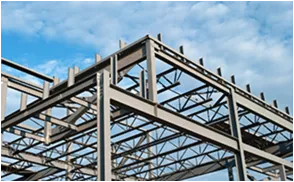- Afrikaans
- Albanian
- Amharic
- Arabic
- Armenian
- Azerbaijani
- Basque
- Belarusian
- Bengali
- Bosnian
- Bulgarian
- Catalan
- Cebuano
- Corsican
- Croatian
- Czech
- Danish
- Dutch
- English
- Esperanto
- Estonian
- Finnish
- French
- Frisian
- Galician
- Georgian
- German
- Greek
- Gujarati
- Haitian Creole
- hausa
- hawaiian
- Hebrew
- Hindi
- Miao
- Hungarian
- Icelandic
- igbo
- Indonesian
- irish
- Italian
- Japanese
- Javanese
- Kannada
- kazakh
- Khmer
- Rwandese
- Korean
- Kurdish
- Kyrgyz
- Lao
- Latin
- Latvian
- Lithuanian
- Luxembourgish
- Macedonian
- Malgashi
- Malay
- Malayalam
- Maltese
- Maori
- Marathi
- Mongolian
- Myanmar
- Nepali
- Norwegian
- Norwegian
- Occitan
- Pashto
- Persian
- Polish
- Portuguese
- Punjabi
- Romanian
- Russian
- Samoan
- Scottish Gaelic
- Serbian
- Sesotho
- Shona
- Sindhi
- Sinhala
- Slovak
- Slovenian
- Somali
- Spanish
- Sundanese
- Swahili
- Swedish
- Tagalog
- Tajik
- Tamil
- Tatar
- Telugu
- Thai
- Turkish
- Turkmen
- Ukrainian
- Urdu
- Uighur
- Uzbek
- Vietnamese
- Welsh
- Bantu
- Yiddish
- Yoruba
- Zulu
Des . 21, 2024 00:40 Back to list
Cold-Formed Steel Buildings An Overview
Cold-formed steel (CFS) has become a prominent material in the construction industry, particularly in creating modern buildings. Unlike traditional hot-rolled steel, cold-formed steel is made by bending and shaping steel sheets at room temperature, giving it a unique set of characteristics that make it particularly suited for various building applications. This article will explore the advantages, applications, and considerations of cold-formed steel buildings.
Advantages of Cold-Formed Steel
1. Lightweight and Strong One of the primary benefits of cold-formed steel is its lightweight nature combined with impressive strength. This characteristic allows for easier handling and transportation, which can significantly reduce labor costs and project timelines. Moreover, the high strength-to-weight ratio means that CFS structures can support considerable loads while minimizing the overall building weight.
2. Versatility in Design Cold-formed steel is incredibly versatile, allowing for more intricate designs than traditional building materials. It can be shaped into a variety of profiles, making it suitable for everything from simple residential homes to complex commercial buildings. Architects and engineers can develop innovative designs while maintaining structural integrity.
3. Sustainability The use of cold-formed steel is also an environmentally friendly option. Steel is recyclable, and using CFS can contribute to the overall sustainability of a project. Moreover, CFS buildings can be constructed with energy-efficient practices, further minimizing their environmental impact. The production of CFS generally involves less energy consumption compared to hot-rolled steel.
4. Fire Resistance Cold-formed steel is non-combustible, offering an inherent fire resistance that many other materials lack. This quality can enhance the safety of structures and can sometimes lower insurance premiums for owners due to reduced fire risk.
5. Cost-Effectiveness Cold-formed steel can lead to significant cost savings in terms of both material and labor. The lightweight nature of CFS reduces the amount of foundation material needed, and its ease of handling can lower labor costs significantly. Furthermore, it often requires fewer materials to achieve the necessary structural performance.
cold formed steel buildings

Applications of Cold-Formed Steel
Cold-formed steel is used in various applications, including residential buildings, commercial structures, and industrial facilities. In residential construction, CFS is increasingly utilized for framing in single-family homes, townhouses, and even multi-story buildings. Its lightweight nature and strength make it suitable for a wide variety of design styles.
In commercial construction, cold-formed steel is often employed in the construction of office buildings, retail spaces, and warehouses. Structures built with CFS can be rapidly assembled, making it a popular choice for projects with tight deadlines. Additionally, cold-formed steel is frequently used in the construction of prefabricated buildings, where components are manufactured off-site and assembled on location.
Considerations for Cold-Formed Steel Construction
While there are many advantages to using cold-formed steel, there are also considerations that builders and architects must account for in the design and construction process. For instance, cold-formed steel is susceptible to corrosion, particularly in humid or coastal environments. It is essential to apply protective coatings or galvanization to prevent rusting and prolong the lifespan of the material.
Furthermore, proper design and engineering are crucial, as CFS has different behavior under load compared to traditional materials. Engineers must carefully analyze loads, spans, and connections to ensure the structural performance meets safety standards.
Conclusion
Cold-formed steel buildings are quickly gaining popularity in the construction sector due to their lightweight yet strong characteristics, design versatility, sustainability, and cost-effectiveness. The various applications of CFS prove its utility and adaptability, whether in residential, commercial, or industrial settings. As the construction industry continues to evolve, cold-formed steel will likely play a vital role in building the structures of tomorrow, offering a forward-thinking solution that aligns with modern sustainability and efficiency goals.
-
Cold Formed Steel Residential Framing
NewsMay.21,2025
-
Innovative Steel Structure Building Solutions
NewsMay.19,2025
-
Innovative Prefab Metal Shed Solutions
NewsMay.19,2025
-
Durable Steel Horse Shelter Solutions
NewsMay.19,2025
-
Durable Metal Shed Solutions
NewsMay.19,2025
-
Durable Big Metal Shed Solutions
NewsMay.19,2025
Products categories
Our Latest News
We have a professional design team and an excellent production and construction team.












